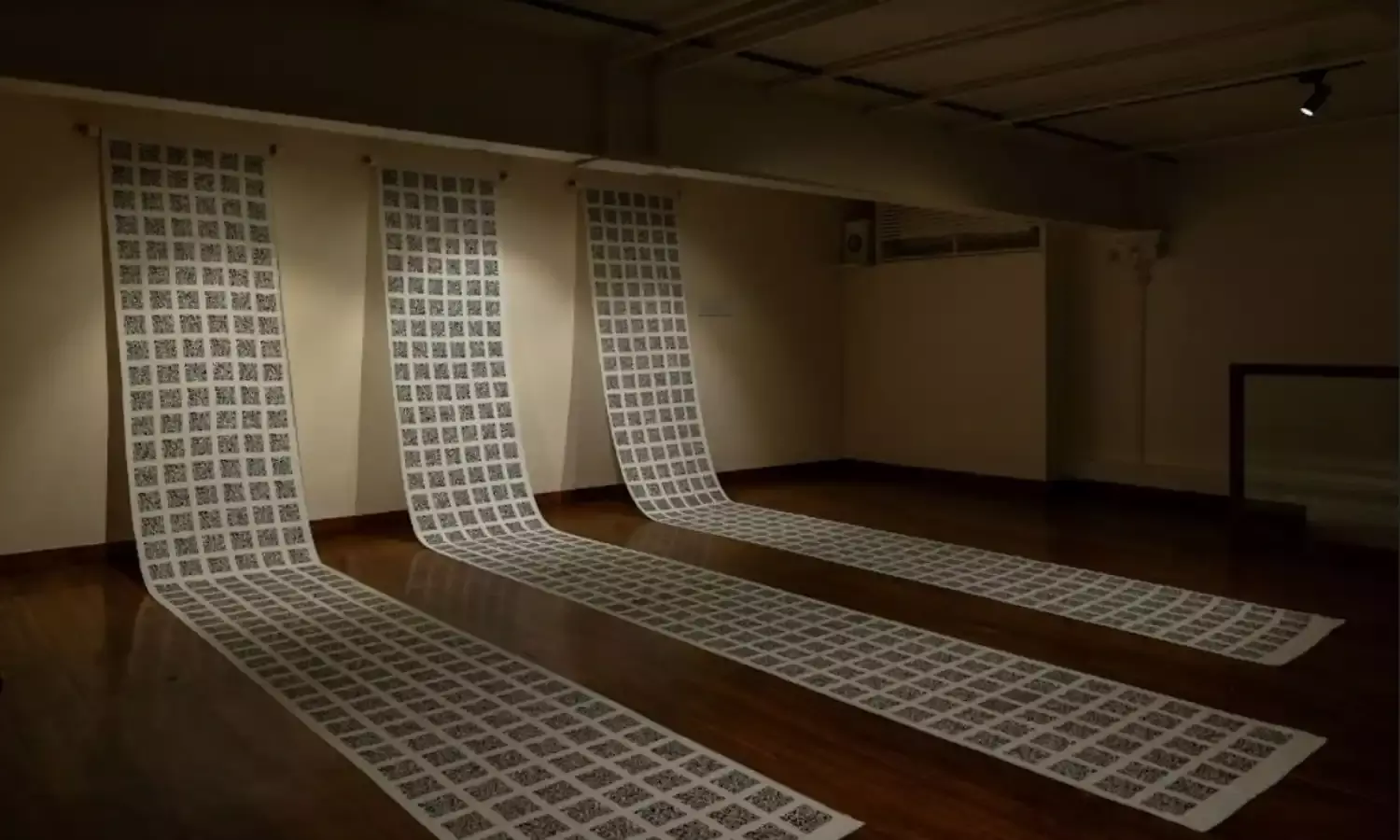The Martyrs of Gaza in Kala Ghoda
Nearly 200,000 Palestinians killed by Israel since October 7;

The Future Will Remember by US artist-activist Alexis Rose is an archaeological exhibition at Mumbai’s Method Art Gallery in Kala Ghoda. It commemorates all the martyrs killed in Gaza by the Israeli occupation in Palestine, by writing their names on bricks that will preserve the memory of their existence combatting the erasure of any genocide. The archaeology of this contemporary reality is the artist’s way of keeping the memory of this ghastly violence blatantly alive.
In October 2023, the world saw the release of the names, ages, genders and official identification numbers of the first known 6,747 martyrs by the State of Palestine. Now the death toll has risen to at least 186,000 people according to estimates of excess deaths caused by the Israeli attacks published in the Lancet medical journal earlier this month.
In the language of archaeology, The Future Will Remember is an attempt to document aspects of the current conflict to confront systems that withhold accountability or representation wherever history is recorded and distortion perpetrated.
The exhibition has quietly affected any passerby who notices the layout of over 2,500 bricks where 338 are etched with names and the rest left blank, waiting to be etched with the names of the departed. The installation is not for sale to individuals but remains to be acquired by a museum so that the general public does not forget the war, even if it wasn’t ours.
Archaeology is the unearthing of fact, especially of those who were the victims of colonial erasures. Each brick on the left bears “20 names and ages of Palestinians martyred in 2023 by the annihilatory violence of settler colonial projects”. In the middle it gives the names of those matyred and on the right it mentions their ages. For example, brick 85 is detailing the names of children under the age of 10 who were martyred, telling the truth of the brutality and clear intent to obliterate an entire community with no traces of a future.
The third part of the exhibition is a video feed of social media information archived by the artist for others to see. Most of the information coming out of Palestine has been censored, thus the act of collecting information first-hand fights the systematised blinding of fact.
Method Kala Ghoda will collect the responses of people in India through an open mic night on August 11-12 in their gallery, featuring the voices of Amir Aziz, Raghu Karnad, Imaad Shah, Swanand Khirke, Danish Husain, Ranjit Hoskote, Abhi Meer Aka The Vigilante, Tejas Menon, Ankit Verma, Humhu, Juie K, Peter Griffin, Mihail Karachiwala, Alexis Rose, and Nush Lewis.
It is difficult in many countries to hold space to engage with the world and its tragedies. In India it has been only a brave few that have stuck their necks out of the herd to look for answers towards a more peaceful cohabitation of conflicting ideas.
The Citizen spoke with Sahil Arora, founder and curator of the Method Art Gallery, about the role of art in activating thought.
Why did you bring this exhibition to India?
It’s a global issue, not an isolated one. What happens in Gaza will set a worldwide precedent in deciphering what is considered a human rights violation and what is not. We are not immune, and we are also not completely void of responsibility purely because of location.
Do you think a better understanding of a crisis will be experienced with this open mic?
What’s happening in Gaza has been broadcast on social media for ten months. I presume the majority of people who will come are those who have been paying attention, but don’t know where to act, and perhaps even feel alone in bearing witness. To watch this unfold without a community is very isolating and deflating. We are not necessarily doing this for educational purposes, but to revive those who either feared speaking up or have reached a point of fatigue in doing so alone for so long.
When crisis is represented in art how does it sensitise the average passerby?
The purpose of “crisis art” or “conflict art” is twofold: one, to engage those who have been looking away, and two, to interact and affirm the beliefs of those who have not. To be honest, I have a complicated relationship with “conflict art” as a “genre” of art – it always needs to be carefully reflected upon when presented. In this instance, I don’t consider this as crisis art; I consider this as liberation art.
The exhibition is on till August 12 and is looking for institutions to display this collection to continue the purpose: art needs to serve in society as an archive.

